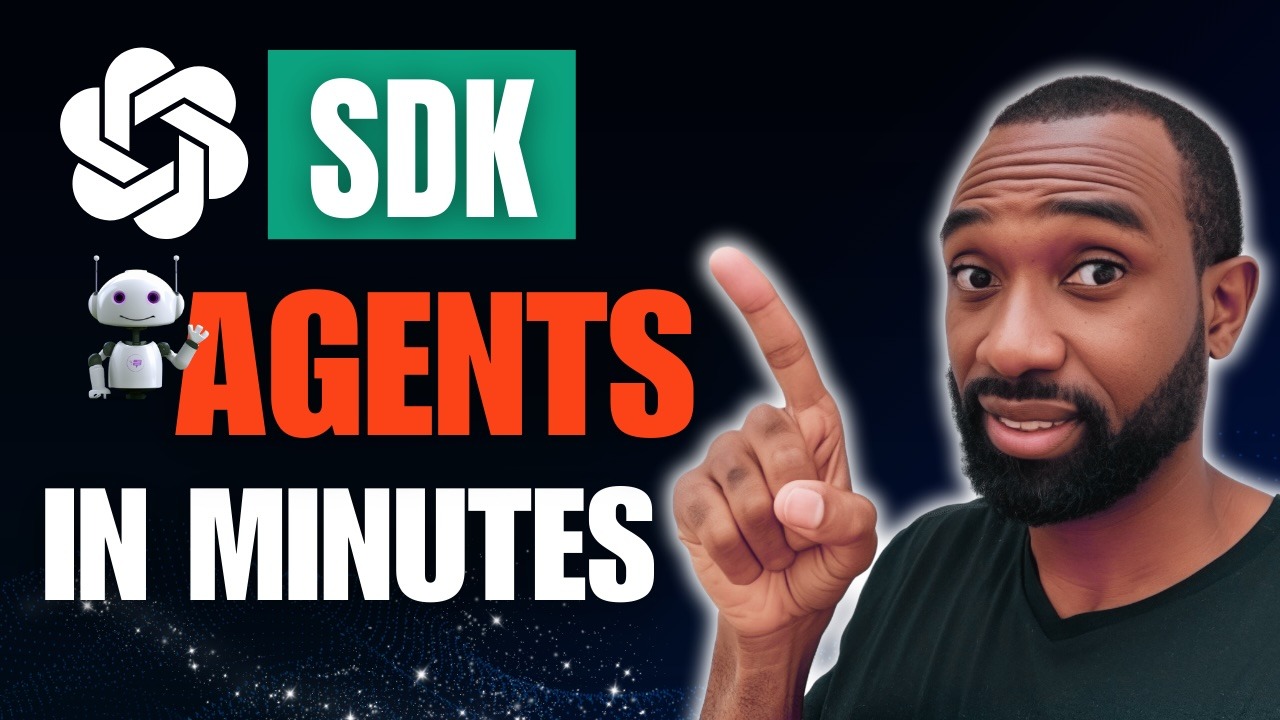In recent times, AI has evolved beyond the realms of novelty, becoming an indispensable part of tech development. I have been particularly engrossed by the possibilities offered by the OpenAI Agents SDK.
Today, I’d like to share my journey in harnessing this technology to build the AI Support Assistant for my company, Bramework. This tool aims to revolutionize customer support by orchestrating tasks with multiple integrated AI agents.
Exploring OpenAI Agents SDK
The catalyst for this project was my experimentation with the OpenAI agent SDK. In a previous video, I dove into creating basic tools utilizing OpenAI’s file search API and response API to conduct web and file searches. This exploration led to the development of an AI support tool capable of handling a wide array of customer support tasks.
With this new system, I’ve introduced multiple agents that are controlled by a main orchestrator agent. Imagine an AI assistant that, when faced with a user query, can delegate different components of the task to specialized agents designed to handle specific roles.
This ability to assign tasks significantly enhances the efficiency of customer support operations.
Capabilities of the AI Support Assistant
The AI support assistant is not a one-size-fits-all tool; it’s versatile and customizable. Users, whether large enterprises or solopreneurs, can adapt the assistant to meet their specific needs.
By connecting it to your company’s internal resources such as databases, communication channels like Slack, and even billing systems, the AI can respond to queries, manage billing issues, or provide up-to-date company information.
I have embedded this multi-agent system with access to various tools. For instance, it can delve into a vector store comprising policy documents, procedures, and conversation histories to furnish relevant information.
Moreover, it can extend its prowess to web searches, ensuring it fetches current data, as demonstrated in one of my tests while retrieving information about GPT 4.5.
Behind the Scenes: Structuring the Agents
At the heart of the assistant is the main orchestrator agent. It is programmed to distribute tasks among several specialized agents: a billing agent, content advisor, WordPress specialist, technical support agent, SEO agent, file, and web search agents.
Utilizing o3-mini, a reasoning model, this main agent can make informed decisions about which secondary agent is most suited to handle a task.
These agents each have access to different knowledge resources and API tools, such as accessing a mock SQL database I created, which stores user information, preferences, and subscription details. This enables them to retrieve and process the necessary information effectively.
Bridging AI and Human Interactions
One of the standout features of the AI support assistant is its ability to connect with humans when required. If an intricate query or a specific need arises, the system is designed to seamlessly transition the conversation from AI to human support.
For example, if a user prefers speaking to a customer representative, the AI can relay the request and user info to a human agent via Slack.
Moreover, the assistant isn’t limited to passive responses. For instance, when the assistant encounters a user stuck on a question related to integrating Bramework with WordPress, it actively searches the web and the vector database to provide an accurate answer.
Future Prospects and Open Source Vision
Looking ahead, I’m excited about the endless possibilities that further advancements can bring to the AI support assistant. My goal is to refine it, address any persisting bugs, and ultimately open-source the project. By doing so, I hope to create a community of developers who can contribute to this initiative and adapt it to diverse applications.
Ultimately, I envision this evolving into a comprehensive live chatbox system, seamlessly integrating with company websites and communication tools for an autonomously functioning support system.
Final Thoughts
The potential for AI to transform customer service workflows is immense, and I’m eager to see how this project further develops.
If you have questions or ideas, feel free to leave a comment or share your thoughts. Together, let’s push the boundaries of what AI can achieve in customer support.
Need help turning your AI idea into reality? Contact me today to discuss how we can bring your vision to life!


